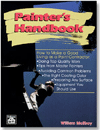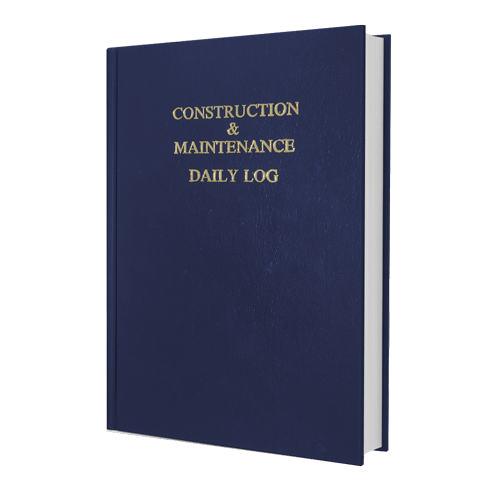A significant percentage of the gypsum board used in non-residential construction is incorporated into fire-resistance-rated assemblies. The majority of the rated walls or partitions constructed with gypsum board in the U. S. and Canada contain “Type X” gypsum board or an improved variation with a proprietary trade name. A handful of systems that use regular core gypsum board to create a rated system still exist; however, they are generally antiquated and supporting documentation can be difficult to obtain.
Similar to regular core board, Type X gypsum board is manufactured in accordance with ASTM Standard C 1396, Standard Specification for Gypsum Board. Specific language in the C 1396 standard establishes the criteria for determining Type X compliance for individual board products.
Section 703.2 of The International Building Code contains a provision that fire resistance ratings generally are to be determined “in accordance with the test procedures set forth in ASTM E119 or UL 263.” The code contains language that permits the use of some alternate methods of establishing fire resistance; however, it primarily establishes the need for a system to be tested to the ASTM Standard E 119, Standard Test Method for Fire Tests of Building Construction and Materials or a recognized equivalent. Other codes and standards also reference the E119 test method, or an equivalent, such as UL 263, as the benchmark for fire resistance testing.
The ASTM E119 Standard has been used continuously since 1918. It is the primary test method used to determine hourly fire resistance ratings for systems that incorporate gypsum panel products, including gypsum board. It is also used for wood, masonry, glass, plaster, steel, and other systems. A variety of refinements have been made to the E 119 standard since 1918; however, several of the test criteria, including the conditions required to “pass” an individual fire test, have remained essentially unchanged.
The test method in the ASTM E 119 standard evaluates “the ability of an assembly [system] to contain a fire or to retain its structural integrity, or both, during the test conditions imposed by the standard.” The test method exposes the system to heat and flame and, based on its performance when evaluated against a series of pass/fail criteria, establishes an endurance time for the system. The endurance time achieved is converted to an hourly rating.
Referencing of the test method(s) by the IBC facilitates comparisons of fire resistance ratings of systems that have been objectively evaluated by a neutral party. As noted prior, the requirements for a system do not vary based on the materials used to construct the system. As an example, for a system to receive a “one-hour fire resistance rating”, all requirements of an ASTM E 119 test must be met in a testing laboratory furnace for at least 59 minutes and 30 seconds for that specific system and with those specific components of the system. Note that ratings are rounded up or down to the nearest minute.
HOURLY FIRE RATINGS
A common misconception about hourly fire ratings is that they imply that a specific system will remain intact for the prescribed time of the hourly rating in an actual fire situation. In other words, the assumption is that a “one-hour rated system” will remain fully intact for at least one hour in a building fire.
In reality, the ratings are better viewed as relative barometers of the tested performance of comparable systems. In this manner, they permit similar or disparate systems to be objectively evaluated from two points of view.
The first perspective is the ability to benchmark systems composed from different materials. If you need to install a one-hour wall between a Post Office and a glass bottle storage facility, you can be confident that a one-hour rated gypsum board wall and a one-hour rated masonry wall will perform in an equivalent manner from a fire-resistance perspective. The test requirements for both systems are identical. The test process does not display a bias.
The second perspective provides the ability to benchmark systems when building codes require an increased fire-resistance rating based on life-safety requirements. Fire test results permit a ranking of performance that is based on the results of the test, not the construction of the system. Numerical fire resistance ratings created by ASTM E 119 tests may be considered as points of reference for comparison purposes; the higher the numerical rating (i.e., one, two, three, or four hour(s)), the greater is the system’s comparative endurance.
As an example, if the glass bottle storage business moves out of the space next to the Post Office and a day care center wants to move in, it’s quite likely that the one-hour wall between the two units will have to be replaced with a two-hour wall. The hourly rating system ensures that the new two-hour wall, regardless of what it is constructed from, will provide better protection from a fire-resistance perspective than the original one-hour wall.
Committees that control the content of the various test standards occasionally discuss the concept of eliminating the “time” element of the test classification system and substituting a simple ranking system that would classify the performance of systems using letters, such as “A,B,C,D,” or numbers (“1,2,3,4”). One problem with trying to change the current system is that building codes contain “partial hour” rating requirements for some conditions. In a practical sense, it’s simpler to reduce a rating from 60 minutes to 45 or 30 minutes as opposed to backing it down from “A” to “3/4 A” or “1/2 A” because, while the end result might be the same, the numerical systems seem to intuitively accommodate the change better.
Another issue is that tests are conducted using a timing device, so regardless of how the results are classified those in the know will always be able to equate a rating to a time. As a result, under the current testing protocol, the difference between a time-relevant number and a reference letter would essentially be meaningless.
This latter point is notable, because it seems that the use of time as a measurement criterion creates much of the confusion about fire tests. Reporting test results as a function of time while simultaneously trying to create a disconnect between the time of the test and the performance of the system seems to imply a “distinction without a difference.” But, in reality, it is an appropriate distinction because the results of an ASTM E 119 test should only be considered as laboratory test results to be used to evaluate the general fire resistance of systems such as walls, columns, slabs, and floor- and roof-ceiling assemblies. The results are neither precise predictors of future performance of the system or an indication of the individual fire resistance of the individual products that make up the system.
The E 119 test method measures the performance of a specific system, composed of specific materials, constructed in a specific test furnace at a finite point in time. In this manner, it is best viewed as producing a “snapshot” of a single system at a given time.
It is important to reiterate that the test process is neutral and does not discriminate against or distinguish between materials or systems. While some subtle differences may exist between test facilities, reputable testing organizations conduct individual tests in accordance with a prescribed methodology that must be followed if a legitimate system report is to be obtained. An objective evaluation of a test report should begin with verification of the test method used to perform the test. Once the test method has been established as legitimate, the remainder of the review process becomes much simpler.






Report Abusive Comment